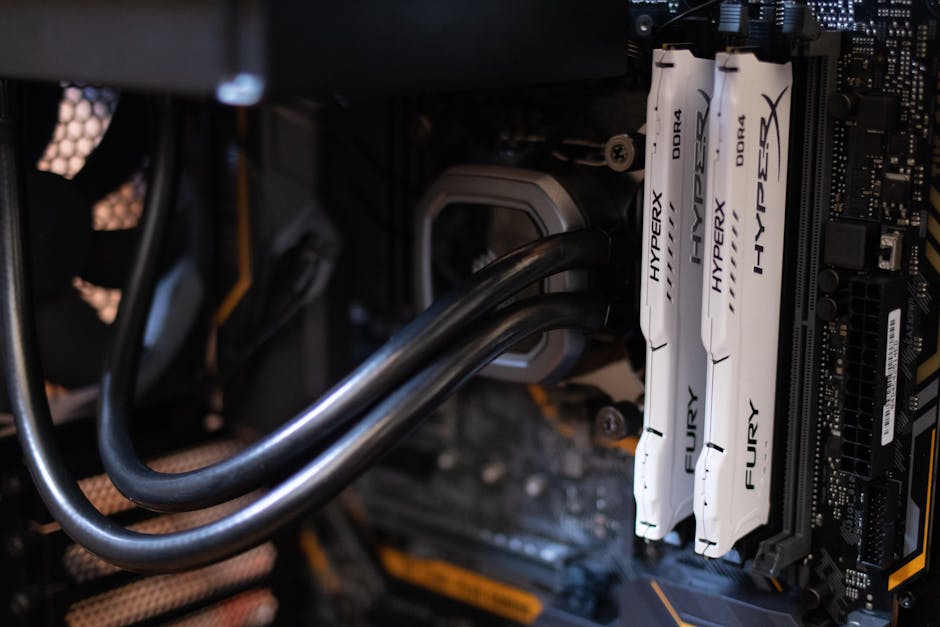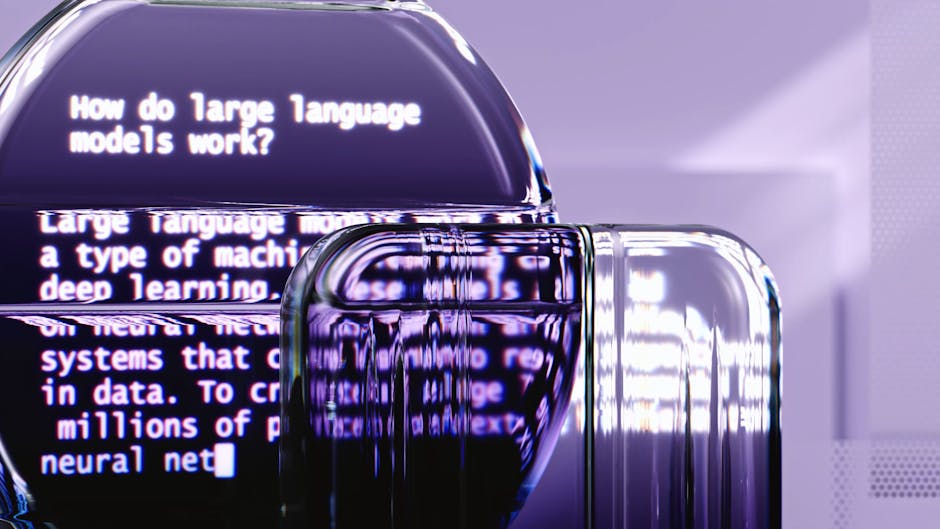How Cisco’s AI defense stacks up against the cyber threats you never see - Related to against, fails, identity, right, is
How Cisco’s AI defense stacks up against the cyber threats you never see

As AI adoption accelerates across enterprises, its lightning-fast adaptability creates a security paradox — how do teams protect a system that constantly evolves while scaling it enterprise-wide?
Adversarial AI is now dominating the threatscape, fueling a stealth cyber war. Adversaries are quick to weaponize every aspect of AI, including large language models (LLMs). AI’s rapid adoption is opening up new attack surfaces that security teams can’t keep up with using current security technologies.
The bottom line is that the gap between adversarial AI and defensive AI is growing fast, with enterprises’ security and financial stability hanging in the balance. From data poisoning to prompt injection attacks, adversaries are already exploiting AI’s vulnerabilities, turning the technology into a vector for misinformation, security breaches and business disruption.
Cisco’s AI defense strategy aims to close these widening gaps between adversarial AI tradecraft and its potential to harm enterprises. With the majority of gen AI deployments expected to lack adequate security by 2028, Cisco’s timing is prescient.
Gartner also reported in its Emerging Tech Impact Radar: Cloud Security that 40% of gen AI implementations by 2028 will be deployed on infrastructures lacking adequate security coverage, exposing enterprises to AI-driven cyber threats at an unprecedented scale.
No business can afford to procrastinate about protecting AI models — they need help addressing the paradox of managing such a highly adaptable asset that could be easily weaponized without their knowledge.
Launched in January, Cisco’s AI Defense addresses this conundrum, integrating real-time monitoring, model validation and policy enforcement at scale.
The unseen war: AI as the attack surface.
AI’s biggest strength, and where it is delivering the most value to enterprises, is its ability to self-learn and adapt. But that’s also its greatest weakness. AI models are non-deterministic, meaning their behavior shifts over time. This unpredictability creates security blind spots that attackers exploit.
Evidence of just how severe the stealth cyberwar is surfacing as the paradox grows wider. Data poisoning attacks are corrupting training datasets, causing AI to produce biased, flawed or dangerous outputs. Prompt injection attacks are designed to trick AI chatbots into revealing sensitive customer data or execute commands that harm models and data. Model exfiltration targets proprietary AI models, stealing intellectual property and undermining a firm’s competitive advantage.
Shadow AI — or the unsanctioned use of AI tools by employees, who inadvertently (or not) feed sensitive data into external AI models like ChatGPT and Copilot — is also contributing to a problem growing wider and at a faster rate.
As Jeetu Patel, EVP and CPO at Cisco told VentureBeat: “Business and technology leaders can’t afford to sacrifice safety for speed when embracing AI. In a dynamic landscape where competition is fierce, speed decides the winners.”.
Simply put: Speed without security is a losing game.
Cisco AI Defense: A new approach to AI security.
Cisco’s AI Defense is purpose-built, embedding security into network infrastructure so it can scale and protect every aspect of AI development, launch and use.
AI visibility and shadow AI detection : Security teams gain real-time visibility into sanctioned and unsanctioned AI applications, tracking who is using AI, how it’s being trained and whether it complies with security policies.
: Security teams gain real-time visibility into sanctioned and unsanctioned AI applications, tracking who is using AI, how it’s being trained and whether it complies with security policies. Automated model validation and red teaming : Cisco’s AI algorithmic red teaming, developed from its Robust Intelligence acquisition, runs trillions of attack simulations, identifying vulnerabilities before adversaries do.
: Cisco’s AI algorithmic red teaming, developed from its Robust Intelligence acquisition, runs trillions of attack simulations, identifying vulnerabilities before adversaries do. Runtime AI security and adaptive enforcement : AI models undergo continuous validation to detect and block prompt injection, data poisoning and adversarial exploits in real time.
: AI models undergo continuous validation to detect and block prompt injection, data poisoning and adversarial exploits in real time. Access control and data loss prevention (DLP): Enterprises can prevent unauthorized AI usage, enforce security policies and ensure sensitive data never leaks into external AI models.
By embedding AI security into Cisco’s networking fabric, AI Defense ensures that AI security is intrinsic to enterprise operations — and not an afterthought.
AI Defense embeds security into the DNA of AI-driven enterprises.
Anxious for results and fearful of falling behind competitors, more organizations are rushing to deploy AI at scale. The growing “deploy now, secure later” rush to results is risky at best and helps fuel the stealth cyberwar against well-funded adversaries intent on attacking target organizations at will.
Cisco’s 2024 AI Readiness Index found that only 29% of enterprises feel equipped to detect and prevent unauthorized AI tampering. This means that 71% of enterprises are vulnerable to AI-driven cyberattacks, compliance violations and catastrophic AI failures.
Gartner warns that enterprises must implement AI runtime defense mechanisms, as traditional endpoint security tools cannot protect AI models from adversarial attacks.
Adopt unified AI security frameworks : Security solutions must be holistic, automated and embedded into infrastructure.
: Security solutions must be holistic, automated and embedded into infrastructure. Implement AI threat intelligence and continuous validation : AI models require constant monitoring as the threat landscape shifts too rapidly for static defenses.
: AI models require constant monitoring as the threat landscape shifts too rapidly for static defenses. Ensure AI compliance across multi-cloud environments: Regulatory frameworks are tightening globally. Enterprises must align AI security policies with evolving compliance mandates like the EU AI Act and NIST AI Security Framework.
Cisco AI Defense: Hardening enterprise AI against evolving threats.
AI is the future of enterprise innovation, but unsecured AI is a liability. Left unprotected, AI can be manipulated, exploited and weaponized by cybercriminals.
Cisco AI Defense is not just a security tool — it is an enterprise-wide AI security strategy. By integrating real-time AI monitoring, automated model validation and network-embedded enforcement, Cisco is setting the new standard for AI security at scale.
As Patel warned: “The security challenges AI introduces are new and complex, with vulnerabilities spanning models, applications and supply chains. We have to think differently. AI Defense is purpose-built to make sure enterprises can innovate boldly, without tradeoffs.”.
Scuf Valor Pro MSRP $[website] Score Details “The Scuf Valor Pro is a fine premium controller out of the box, but its design quirks add up.” Pros Hall ef......
The New York Times has plenty of word games on its roster today — with Wordle, Connections, Strands, and the Mini Crossword, there’s something for eve......
Identity is the breaking point — get it right or zero trust fails

Deepfakes, or AI-driven deception and weaponized large language models (LLMs) aren’t just cyber threats; they’re the new weapons of mass exploitation. Adversaries aren’t just hacking systems anymore; they’re hacking people and their identities.
Impersonating executives, bypassing security with stolen credentials and manipulating trust at scale are all redefining the new threatscape. It’s an all-out cyberwar with identities hanging in the balance. AI and generative AI are giving adversaries an edge in how quickly they can fine-tune and improve their tradecraft.
The result: Massive breaches and ransomware demands that are setting new records and fueling double extortion demands.
CrowdStrike’s 2024 Global Threat investigation highlights this concern, revealing that 60% of intrusions now involve valid credentials, revealing the growing threat of identity-based attacks. Jeetu Patel, Cisco’s EVP and CPO, describes the fundamental problem enterprises face: “The attacks are getting very coordinated, but the defenses are very isolated. That dissonance is not a healthy distance to have.”.
Shlomo Kramer, cofounder and CEO of Cato Networks, echoed that view: “The era of cobbled-together security solutions is over.” Cato’s rapid growth underscores how businesses are moving to unified, cloud-based security to eliminate these gaps.
Adversaries ranging from rogue attackers to nation-state cyberwar units are prioritizing the exfiltration of identities at scale and profiting from them for financial and political gain (sometimes both).
It’s on security leaders and their teams to shift their security postures to adapt and stop identity-driven attacks, beginning with continuous authentication, least privilege access and real-time threat detection. VentureBeat research has revealed that organizations are doubling down on zero-trust frameworks and its core concepts to thwart identity-driven attacks.
The high cost of identities are under siege.
Deloitte’s Center for Financial Services predicts that gen AI could drive fraud losses in the [website] to $40 billion by 2027, up from $[website] billion in 2023. This projection underscores the escalating threat posed by deepfake technology and other AI-driven fraud mechanisms.
In 2024, deepfake fraud attempts occurred at a rate of one every 5 minutes, contributing to a 244% surge in digital document forgeries. In addition, 49% of businesses globally reported incidents of deepfake fraud in 2024.
Gartner warns of growing blind spots: “Scope expansion and increasingly distributed IT environments are leading to identity access management (IAM) coverage gaps.”.
Deepfakes typify the cutting edge of adversarial AI attacks, seeing a 3,000% increase last year alone.
A recent survey by Deloitte found that [website] of organizations experienced one or more deepfake incidents targeting financial and accounting data in the 12 months prior.
Enterprise leaders don’t fear brute force attacks as much as identity breaches no one sees coming. The most lethal thing about an identity-based attack is the element of surprise. Adversaries often lurk on networks for months, installing ransomware and exfiltrating thousands of identities before launching double extortion attacks and holding identities hostage.
Zero trust or zero chance: Why IAM must evolve now to counter cyber threats.
The traditional perimeter-based security model is a liability. In today’s world of mechanized and machine-speed attacks orchestrated with weaponized AI, any organization relying purely on perimeter-based systems is at an immediate disadvantage.
With relentless cyberattacks aimed at breaking endpoints and seizing control of identities first — then entire networks — trust is a vulnerability no one can afford. Assuming trust between endpoints or across networks leaves too many gaps that adversaries are identifying with improved reconnaissance tradecraft.
The only viable defense against identity attacks is zero trust, a framework built on continuous verification, least privilege access and the assumption that a breach has already happened. For a blueprint, refer to the National Institute of Standards and Technology’s (NIST) zero trust architecture. It is one of the most-used documents by organizations planning and implementing zero trust frameworks, deployment models and use cases to harden enterprise security.
Zero trust delivers an entirely new perspective and approach to securing organizations. Enterprises are encouraged to operate from the mindset of how they’d react if they’d already been breached.
Segmenting endpoints and systems, ensuring least privilege access on every identity and their many credentials and constantly monitoring every request for services or access and tracking those to identify anomalous activity is key. Simply assuming trust across a network — or worse, on endpoints — is an open invitation to a breach that can go unnoticed for months or years.
By enforcing least privilege, an identity can only use a resource (whether data source, application or network) for a specific period. As Patel explained: “Security is a data game. If you just aggregate telemetry, you don’t get the resolution of security you need.”.
Every IAM vendor today has AI-driven anomaly detection that automates the identification of credential misuse and privilege escalation before an attacker moves laterally. Many are also pursuing machine identity management, as they now outnumber human identities by a factor of 45 times — the typical enterprise reports having 250,000 machine identities.
Patel observed: “You cannot deal with these attacks at human scale anymore. You have to deal with them at machine scale.” That focus is reflected in vendors’ product roadmaps. In 2024 alone, Cato Networks expanded its secure access service edge (SASE) cloud platform with extended detection and response (XDR), endpoint protection platform (EPP), digital experience monitoring (DEM) and IoT/OT security to address the proliferation of non-human identities across global operations.
Gartner highlights a shifting strategy: “IAM is evolving as enterprises recognize that point solutions are failing. Security leaders are now looking toward integrated security platforms that provide identity-first defenses across hybrid and multicloud environments.”.
To support this point, Cato Networks reported 46% ARR growth in 2024 to surpass $250 million. The enterprise credits this surge to enterprises seeking a single cloud-based platform rather than stitching together multiple-point solutions. More than 3,000 businesses are adopting Cato SASE, signaling a clear shift to integrated, cloud-based security. This kind of broad adoption illustrates that zero-trust-enabled solutions have quickly become a mainstream defense strategy.
Gartner’s Market Guide for Identity Governance and Administration (IGA) highlights key vendors leading this transition:
SailPoint, Saviynt, Omada; Privileged access management (PAM) : CyberArk, Delinea, BeyondTrust;
: CyberArk, Delinea, BeyondTrust; Access management : Okta, Ping Identity, ForgeRock;
: Okta, Ping Identity, ForgeRock; Identity threat detection and response (ITDR) : CrowdStrike, Cisco, Zscaler, SentinelOne;
: CrowdStrike, Cisco, Zscaler, SentinelOne; Machine identity management: Venafi, Keyfactor, AWS, HashiCorp.
Patel told VentureBeat that he predicts massive consolidation in the market. “There won’t be 3,500 security vendors in the future. There will be a handful of platforms that truly integrate security across domains.”.
For CISOs, this means selecting adaptive platforms that unify IAM, ITDR and zero-trust principles, rather than managing disconnected tools that create silos. The vendors that dominate will be those that seamlessly integrate identity security, threat detection and AI-powered automation into a single system of intelligence.
Cyber-resilience begins with identity — act now or fall behind.
There’s a cyberwar waging, and identities hang in the balance. Adversaries ranging from nation-state cyber war units to ransomware gangs delivering AI-powered automated attacks are setting a swift pace.
Hackers are moving at machine speed, exploiting identity gaps and weaponizing trust to infiltrate organizations before security teams can react.
The data is clear: 60% of breaches now involve valid credentials; deepfake fraud attempts occur every five minutes; and identity-based attacks lurk unseen for months before detonating into double-extortion ransom demands. Meanwhile, traditional security models reliant on perimeter defenses and isolated IAM tools are failing — leaving enterprises exposed to sophisticated, AI-driven threats.
The choice is stark: Zero trust or zero chance.
The Whole Truth offers healthy snacks such as protein bars, peanut butter, muesli, among others, to consumers via its website and ecommerce platforms.
Google also removed these crypto exchange apps from its Play Store in India in January 2024.
The Indian Finance Ministry's Financial Intelligence Unit......
Serverpod raises €2.7M for its developer app

Developer app Serverpod has raised a €[website] Seed round led by [website], with participation from Greens Ventures and PreSeed Ventures.
Serverpod is an open-source, scalable app server written in Dart, specifically designed for the Flutter community. It enables developers to write server-side code in Dart, facilitating seamless integration between backend and frontend components. Serverpod automatically generates protocol and client-side code by analyzing the server, making remote endpoint calls as straightforward as local method calls.
It is designed to integrate seamlessly with Flutter applications. It allows developers to write backend logic in Dart, enabling smooth communication between frontend and backend components. The framework includes automatic generation of client-side code, simplifying remote procedure calls.
Serverpod also elements built-in database support with an ORM, authentication mechanisms, and caching to improve performance. Additionally, it provides structured logging and monitoring tools to help developers track errors and optimize server performance. Its modular architecture allows for customization and scalability, making it suitable for various application needs.
This funding comes just a year after securing €[website] in pre-seed funding led by PreSeed Ventures in February 2024. In December 2022, the organization secured an early-stage venture capital investment. This infusion of capital was aimed at expanding the team and enhancing their product offerings. Later, in December 2024, Serverpod obtained an additional $5M in early-stage venture capital funding, bringing the total amount raised to date to approximately $[website].
[website] partner Daniela Sjunnesson commented: “Serverpod is solving a critical pain point for Flutter developers with a team that knows this challenge firsthand. Viktor and his team combine deep technical expertise with a passion for making backend development radically simpler. As Flutter adoption grows, the demand for a scalable, developer-friendly backend is growing. We’re excited to back a team so uniquely positioned to lead this shift and build a category-defining organization.”.
The CEO and co-founder of Nvidia-backed AI-powered voice assistant startup PolyAI says the London startup’s future is “predominantly American” but it ......
Stockwiz uses 100+ data information and more than 1 Mn data points to refine its AI-ML-powered trading models.
What do Groww, Zerodha and Dhan (part of Ra......
Market Impact Analysis
Market Growth Trend
| 2018 | 2019 | 2020 | 2021 | 2022 | 2023 | 2024 |
|---|---|---|---|---|---|---|
| 12.0% | 14.4% | 15.2% | 16.8% | 17.8% | 18.3% | 18.5% |
Quarterly Growth Rate
| Q1 2024 | Q2 2024 | Q3 2024 | Q4 2024 |
|---|---|---|---|
| 16.8% | 17.5% | 18.2% | 18.5% |
Market Segments and Growth Drivers
| Segment | Market Share | Growth Rate |
|---|---|---|
| Digital Transformation | 31% | 22.5% |
| IoT Solutions | 24% | 19.8% |
| Blockchain | 13% | 24.9% |
| AR/VR Applications | 18% | 29.5% |
| Other Innovations | 14% | 15.7% |
Technology Maturity Curve
Different technologies within the ecosystem are at varying stages of maturity:
Competitive Landscape Analysis
| Company | Market Share |
|---|---|
| Amazon Web Services | 16.3% |
| Microsoft Azure | 14.7% |
| Google Cloud | 9.8% |
| IBM Digital | 8.5% |
| Salesforce | 7.9% |
Future Outlook and Predictions
The Cisco Defense Stacks landscape is evolving rapidly, driven by technological advancements, changing threat vectors, and shifting business requirements. Based on current trends and expert analyses, we can anticipate several significant developments across different time horizons:
Year-by-Year Technology Evolution
Based on current trajectory and expert analyses, we can project the following development timeline:
Technology Maturity Curve
Different technologies within the ecosystem are at varying stages of maturity, influencing adoption timelines and investment priorities:
Innovation Trigger
- Generative AI for specialized domains
- Blockchain for supply chain verification
Peak of Inflated Expectations
- Digital twins for business processes
- Quantum-resistant cryptography
Trough of Disillusionment
- Consumer AR/VR applications
- General-purpose blockchain
Slope of Enlightenment
- AI-driven analytics
- Edge computing
Plateau of Productivity
- Cloud infrastructure
- Mobile applications
Technology Evolution Timeline
- Technology adoption accelerating across industries
- digital transformation initiatives becoming mainstream
- Significant transformation of business processes through advanced technologies
- new digital business models emerging
- Fundamental shifts in how technology integrates with business and society
- emergence of new technology paradigms
Expert Perspectives
Leading experts in the digital innovation sector provide diverse perspectives on how the landscape will evolve over the coming years:
"Technology transformation will continue to accelerate, creating both challenges and opportunities."
— Industry Expert
"Organizations must balance innovation with practical implementation to achieve meaningful results."
— Technology Analyst
"The most successful adopters will focus on business outcomes rather than technology for its own sake."
— Research Director
Areas of Expert Consensus
- Acceleration of Innovation: The pace of technological evolution will continue to increase
- Practical Integration: Focus will shift from proof-of-concept to operational deployment
- Human-Technology Partnership: Most effective implementations will optimize human-machine collaboration
- Regulatory Influence: Regulatory frameworks will increasingly shape technology development
Short-Term Outlook (1-2 Years)
In the immediate future, organizations will focus on implementing and optimizing currently available technologies to address pressing digital innovation challenges:
- Technology adoption accelerating across industries
- digital transformation initiatives becoming mainstream
These developments will be characterized by incremental improvements to existing frameworks rather than revolutionary changes, with emphasis on practical deployment and measurable outcomes.
Mid-Term Outlook (3-5 Years)
As technologies mature and organizations adapt, more substantial transformations will emerge in how security is approached and implemented:
- Significant transformation of business processes through advanced technologies
- new digital business models emerging
This period will see significant changes in security architecture and operational models, with increasing automation and integration between previously siloed security functions. Organizations will shift from reactive to proactive security postures.
Long-Term Outlook (5+ Years)
Looking further ahead, more fundamental shifts will reshape how cybersecurity is conceptualized and implemented across digital ecosystems:
- Fundamental shifts in how technology integrates with business and society
- emergence of new technology paradigms
These long-term developments will likely require significant technical breakthroughs, new regulatory frameworks, and evolution in how organizations approach security as a fundamental business function rather than a technical discipline.
Key Risk Factors and Uncertainties
Several critical factors could significantly impact the trajectory of digital innovation evolution:
Organizations should monitor these factors closely and develop contingency strategies to mitigate potential negative impacts on technology implementation timelines.
Alternative Future Scenarios
The evolution of technology can follow different paths depending on various factors including regulatory developments, investment trends, technological breakthroughs, and market adoption. We analyze three potential scenarios:
Optimistic Scenario
Rapid adoption of advanced technologies with significant business impact
Key Drivers: Supportive regulatory environment, significant research breakthroughs, strong market incentives, and rapid user adoption.
Probability: 25-30%
Base Case Scenario
Measured implementation with incremental improvements
Key Drivers: Balanced regulatory approach, steady technological progress, and selective implementation based on clear ROI.
Probability: 50-60%
Conservative Scenario
Technical and organizational barriers limiting effective adoption
Key Drivers: Restrictive regulations, technical limitations, implementation challenges, and risk-averse organizational cultures.
Probability: 15-20%
Scenario Comparison Matrix
| Factor | Optimistic | Base Case | Conservative |
|---|---|---|---|
| Implementation Timeline | Accelerated | Steady | Delayed |
| Market Adoption | Widespread | Selective | Limited |
| Technology Evolution | Rapid | Progressive | Incremental |
| Regulatory Environment | Supportive | Balanced | Restrictive |
| Business Impact | Transformative | Significant | Modest |
Transformational Impact
Technology becoming increasingly embedded in all aspects of business operations. This evolution will necessitate significant changes in organizational structures, talent development, and strategic planning processes.
The convergence of multiple technological trends—including artificial intelligence, quantum computing, and ubiquitous connectivity—will create both unprecedented security challenges and innovative defensive capabilities.
Implementation Challenges
Technical complexity and organizational readiness remain key challenges. Organizations will need to develop comprehensive change management strategies to successfully navigate these transitions.
Regulatory uncertainty, particularly around emerging technologies like AI in security applications, will require flexible security architectures that can adapt to evolving compliance requirements.
Key Innovations to Watch
Artificial intelligence, distributed systems, and automation technologies leading innovation. Organizations should monitor these developments closely to maintain competitive advantages and effective security postures.
Strategic investments in research partnerships, technology pilots, and talent development will position forward-thinking organizations to leverage these innovations early in their development cycle.
Technical Glossary
Key technical terms and definitions to help understand the technologies discussed in this article.
Understanding the following technical concepts is essential for grasping the full implications of the security threats and defensive measures discussed in this article. These definitions provide context for both technical and non-technical readers.
RPA intermediate
scalability intermediate
IoT intermediate
API beginner
 How APIs enable communication between different software systems
How APIs enable communication between different software systems

